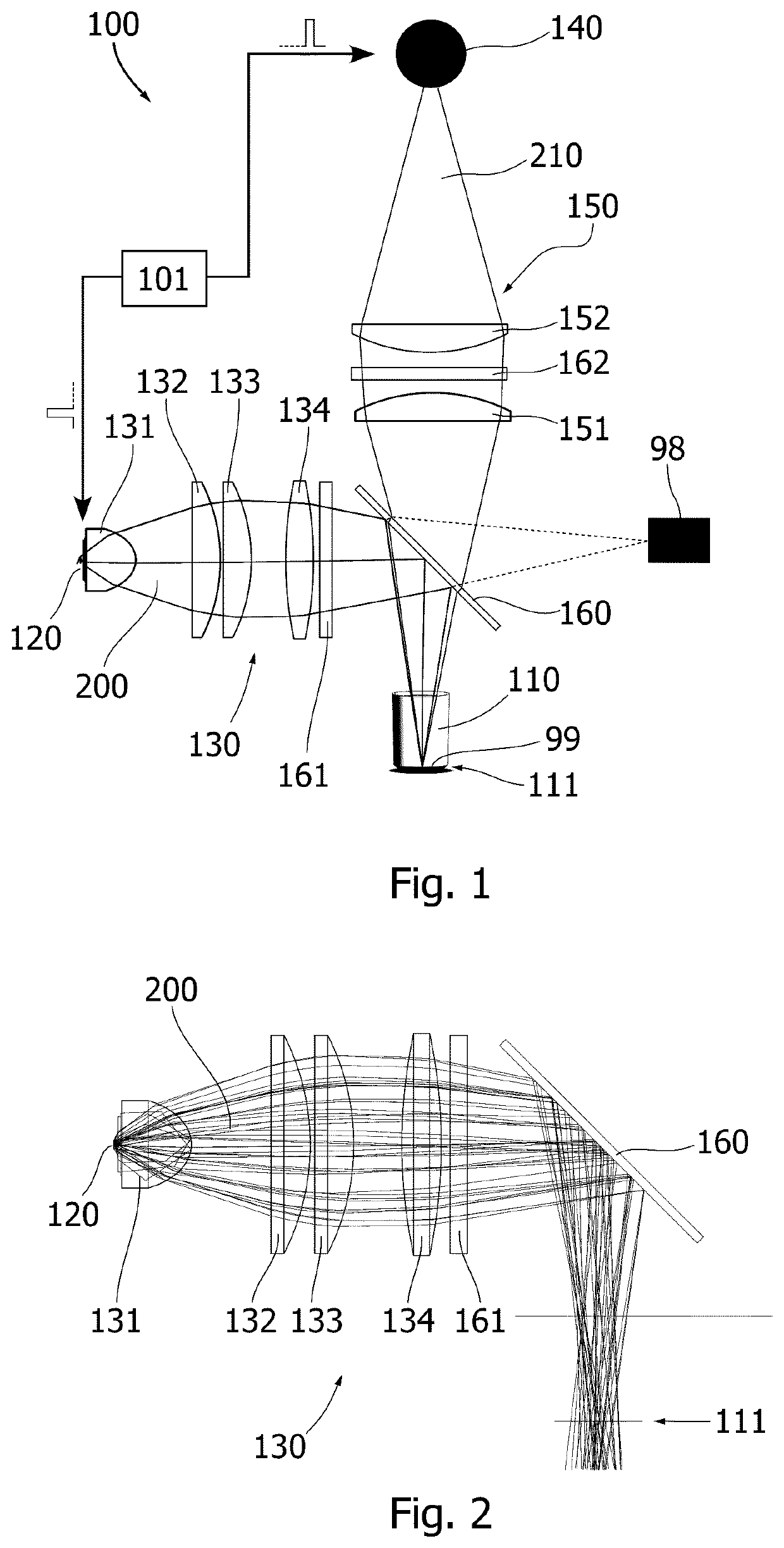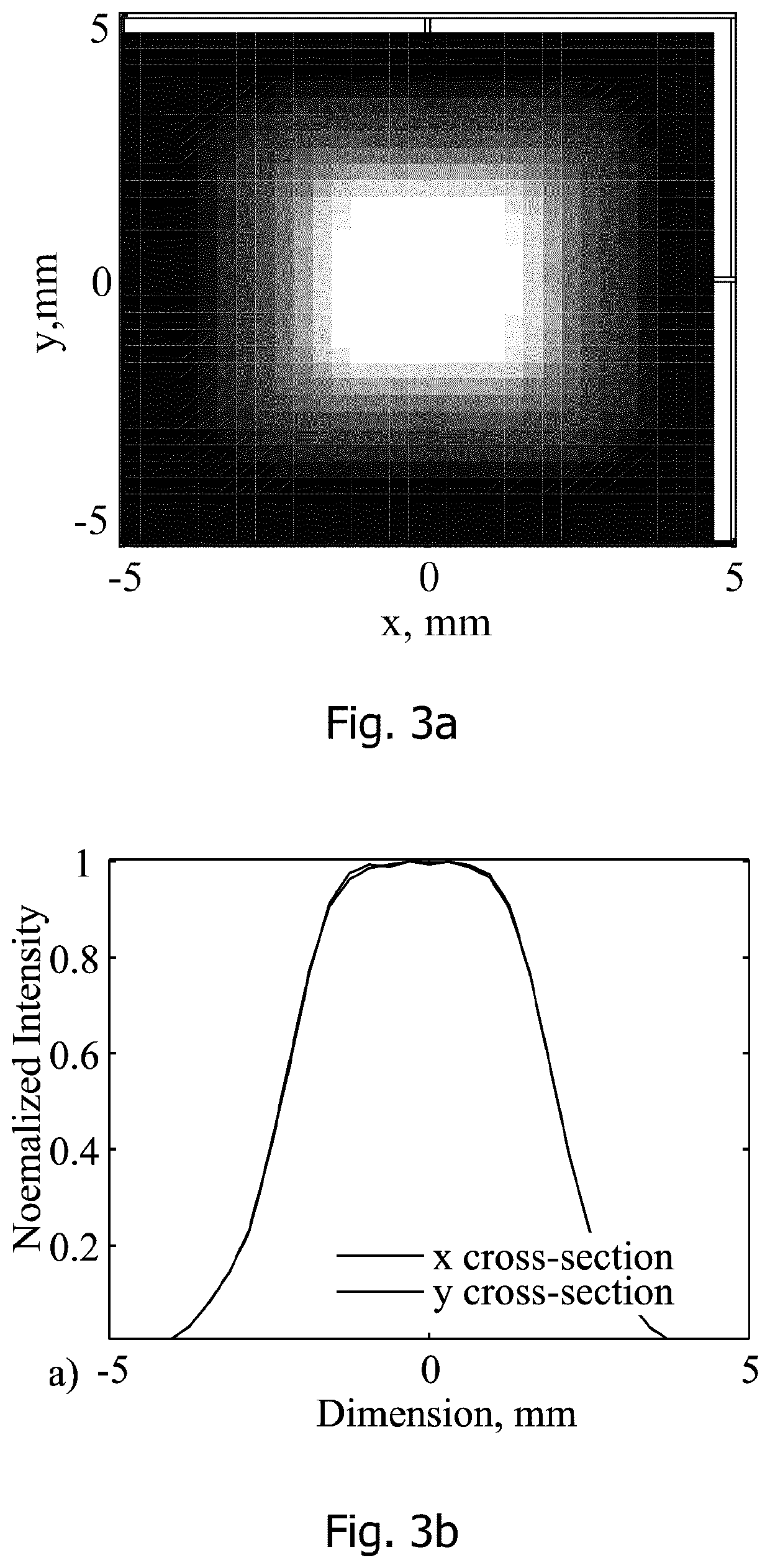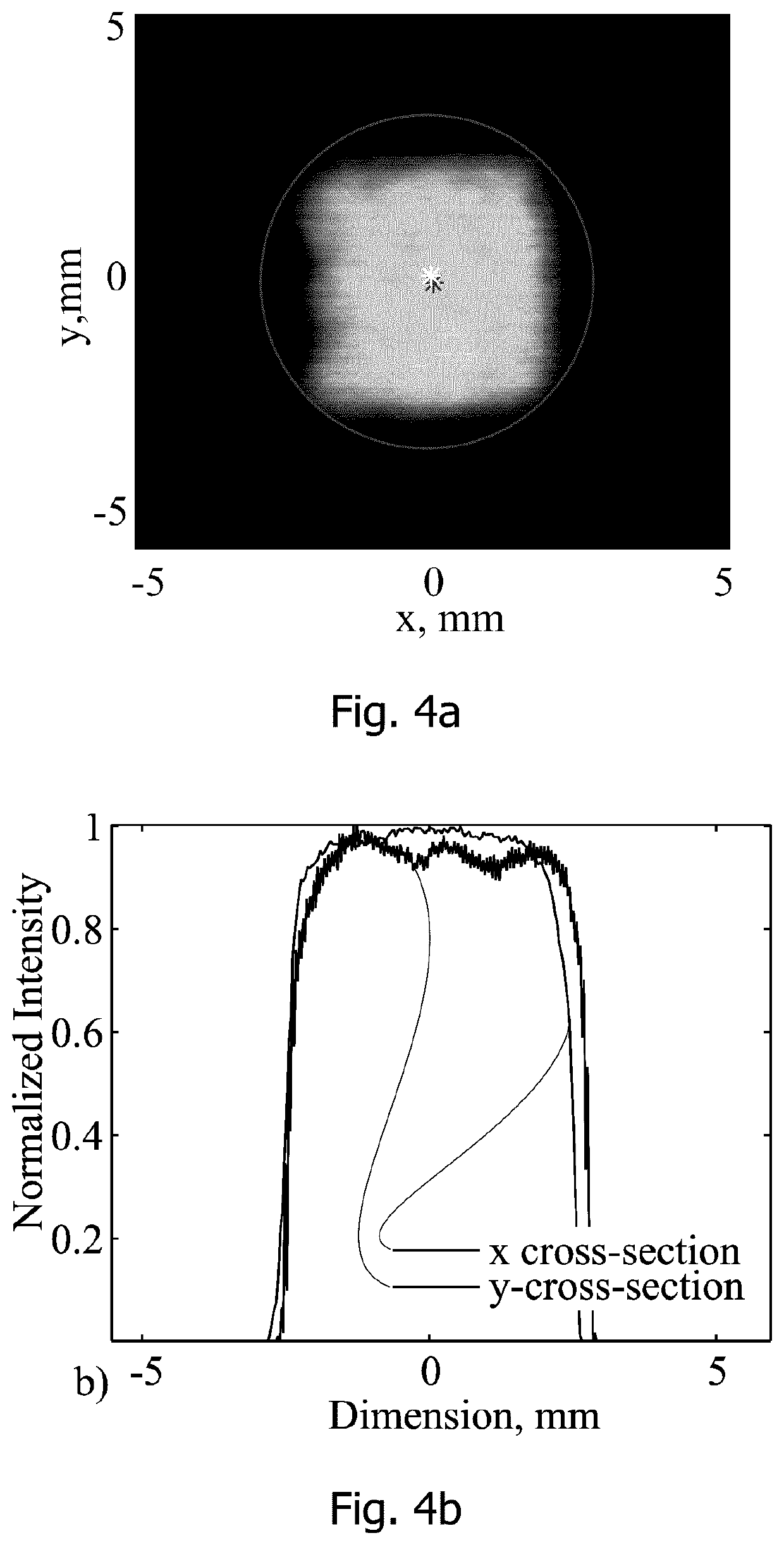System and method for time-resolved fluoroimmunoassay detection
a fluoroimmunoassay and time-resolved technology, applied in the direction of fluorescence/phosphorescence, instruments, material analysis, etc., can solve the problems of not being able to successfully implement time-resolved fluoroimmunoassay detection using uv-led as pulsed excitation source, low peak power output of light emitting diodes in the uv emission band, and long excitation pulses that affect excitation efficiency
- Summary
- Abstract
- Description
- Claims
- Application Information
AI Technical Summary
Benefits of technology
Problems solved by technology
Method used
Image
Examples
example
[0084]In this example, the LED based system is used to test its capability in time-resolved fluorescence immunoassay measurements of a Troponin I (TnI) cardiac marker. Fifteen sample cups and fifteen blank cups were produced for the experiment with TnI immunoassay. The TnI cups are made of polystyrene coated by streptavidin to block non-specific bonding of tracer antibodies. A layer of capture antibodies in the bottom is used to capture the antigen in the sample between the tracer and capture antibodies. Europium fluorescent marker is bound to the tracer antibodies, which are placed in the cup closer to the sides. An insulation layer prevents contact between the capture and tracer antibodies. A sample cup is processed with a 10 μL reference solution with the TnI concentration of 200 ng / L. During the incubation, it is heated to 36° C. for 15 minutes and shaked to reduce the reaction time. After the reaction, the cup is washed and unbound tracer antibodies are washed out. The labeled ...
PUM
| Property | Measurement | Unit |
|---|---|---|
| wave length | aaaaa | aaaaa |
| wave length | aaaaa | aaaaa |
| FWHM | aaaaa | aaaaa |
Abstract
Description
Claims
Application Information
 Login to View More
Login to View More - R&D
- Intellectual Property
- Life Sciences
- Materials
- Tech Scout
- Unparalleled Data Quality
- Higher Quality Content
- 60% Fewer Hallucinations
Browse by: Latest US Patents, China's latest patents, Technical Efficacy Thesaurus, Application Domain, Technology Topic, Popular Technical Reports.
© 2025 PatSnap. All rights reserved.Legal|Privacy policy|Modern Slavery Act Transparency Statement|Sitemap|About US| Contact US: help@patsnap.com



